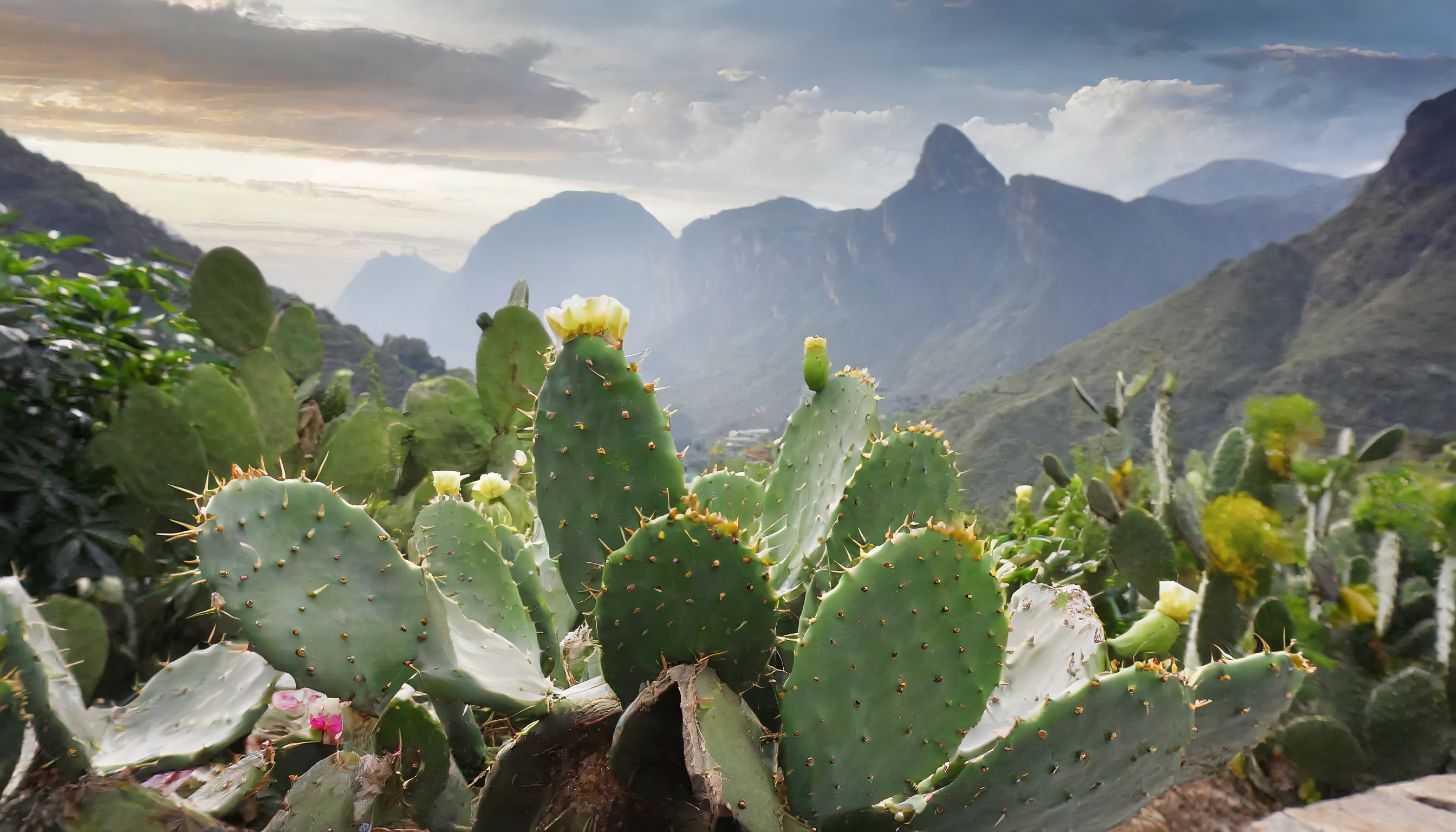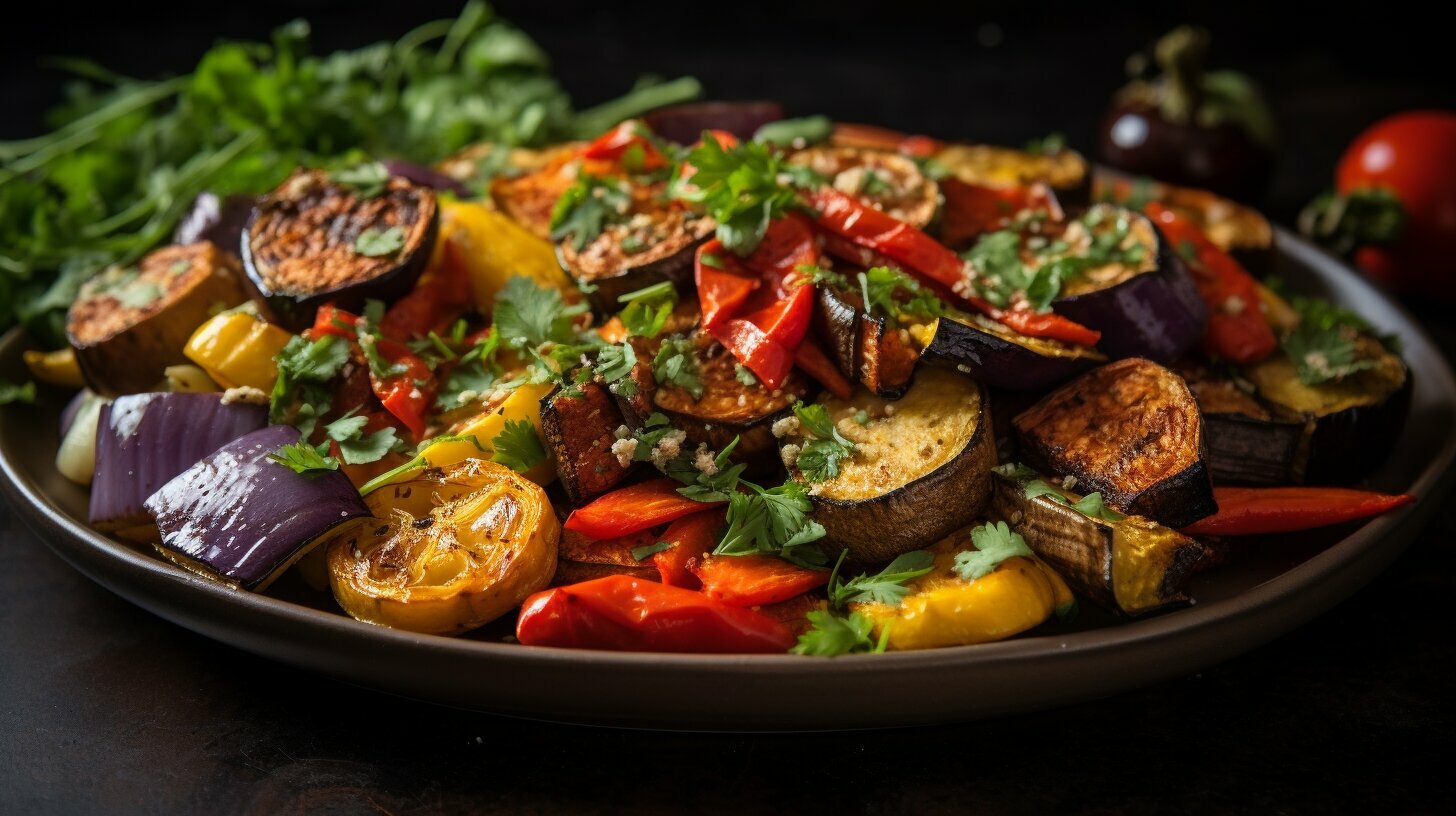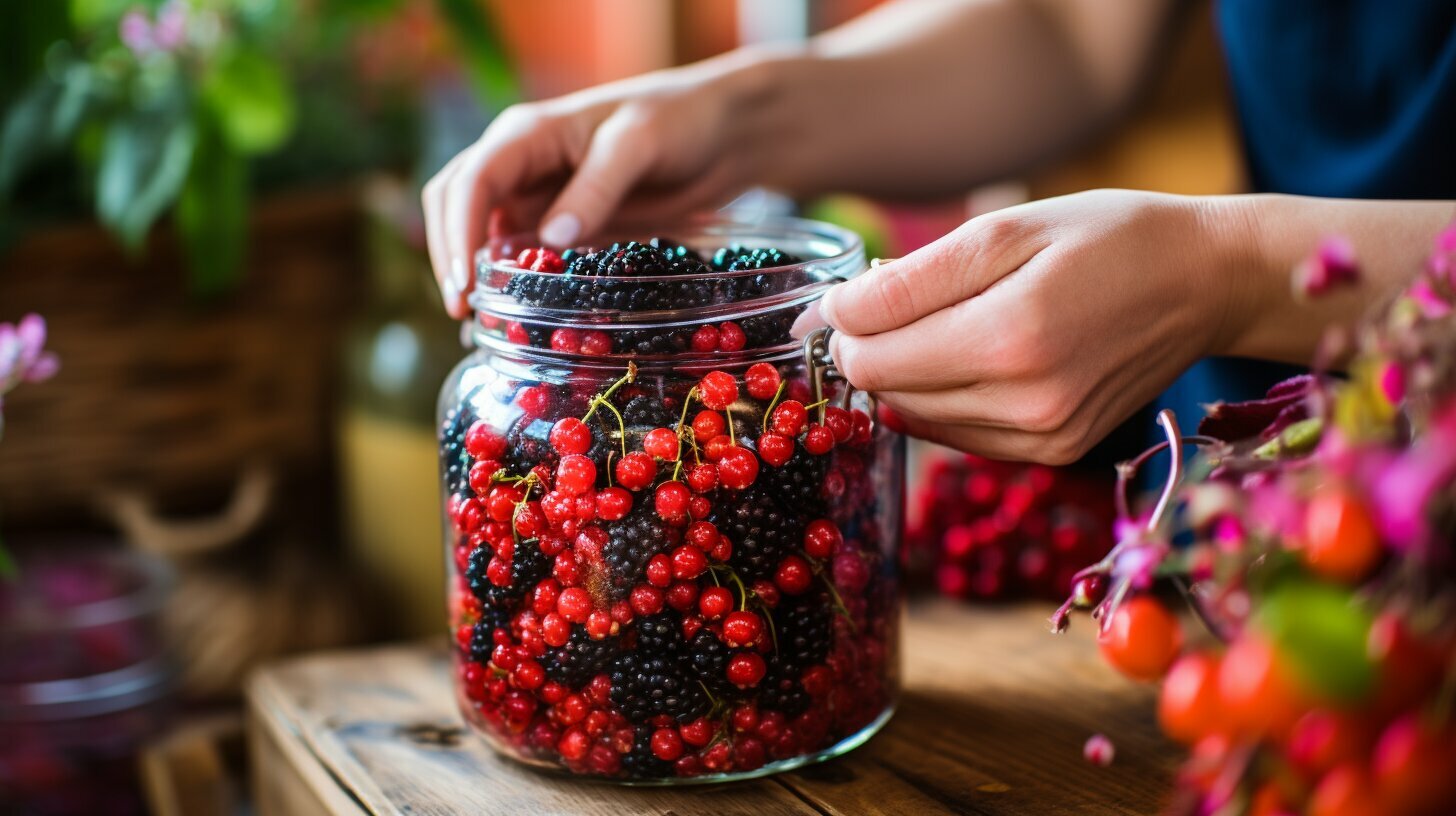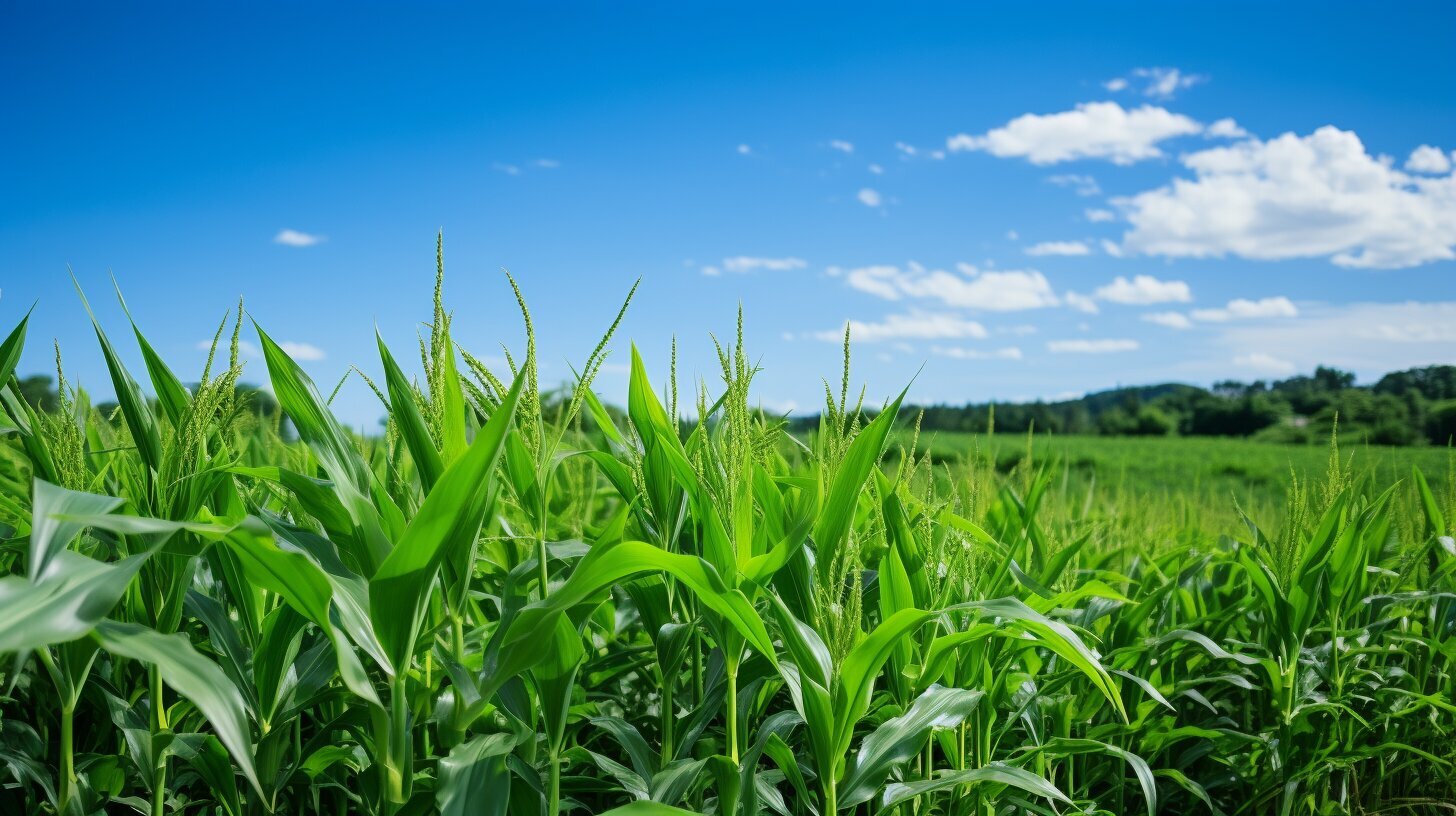Foraging for wild plants has been a part of human history for thousands of years. It’s a way to connect with nature and gain a deeper understanding of our environment. Prickly pear cactus is one such plant that has been used for food, medicine, and even clothing by indigenous cultures for generations. In recent years, there has been a resurgence of interest in foraging prickly pear cactus due to its unique flavor and health benefits.
But before you venture out into the wilderness to forage prickly pear cactus, it’s essential to understand how to do so safely and responsibly. In this section, we will provide a comprehensive guide to foraging prickly pear cactus, including identifying and locating the plant, safety precautions, harvesting, preparation, and utilization.
Disclosure: When you buy through links on our site, we may earn an affiliate commission.
Key Takeaways
- Foraging prickly pear cactus has been a part of human history for thousands of years.
- Understanding how to forage safely and responsibly is crucial.
- This guide will cover identification, safety, harvesting, preparation, and utilization of prickly pear cactus.
- Prickly pear cactus is a versatile plant used for food, medicine, and clothing by indigenous cultures.
- With the knowledge gained from this guide, you can safely and responsibly embark on your own foraging adventures.
Understanding the Prickly Pear Cactus
If you are interested in foraging wild plants, the prickly pear cactus is a must-try. This succulent plant is a staple in many Southwestern American diets, and for a good reason.
The wild prickly pear cactus is abundant in the arid regions of the United States, making it an excellent option for foragers. It is not only edible but also highly nutritious and packed with health benefits.
Edible Prickly Pear Cactus
The prickly pear cactus has flat, paddle-shaped leaves known as pads or nopales and produces vibrant pinkish-red fruits called tunas. Both the pads and tunas are edible and can be cooked in various ways.
The nopales have a slightly tangy, lemony flavor and a firm texture when cooked. They are an excellent source of vitamin C, fiber, and antioxidants. The tunas, on the other hand, have a sweet, juicy taste with crunchy seeds. They are rich in vitamin C, magnesium and contain anti-inflammatory properties.
Benefits of Prickly Pear Cactus Foraging
Foraging prickly pear cactus can offer numerous benefits for your health and the environment. First, it is a sustainable source of food that does not require any pesticides or fertilizers to grow. It is also a drought-resistant plant that can thrive in harsh environments.
Second, it is a nutrient-dense food that can help boost your immune system, reduce inflammation, and regulate blood sugar levels. The nopales are high in fiber, which can aid digestion and promote weight loss. The tunas are rich in antioxidants that protect the body against free radicals.
In conclusion, understanding the characteristics and benefits of prickly pear cactus can make foraging a safer and more enjoyable experience. In the next section, we will discuss how to identify and locate prickly pear cactus in the wild.
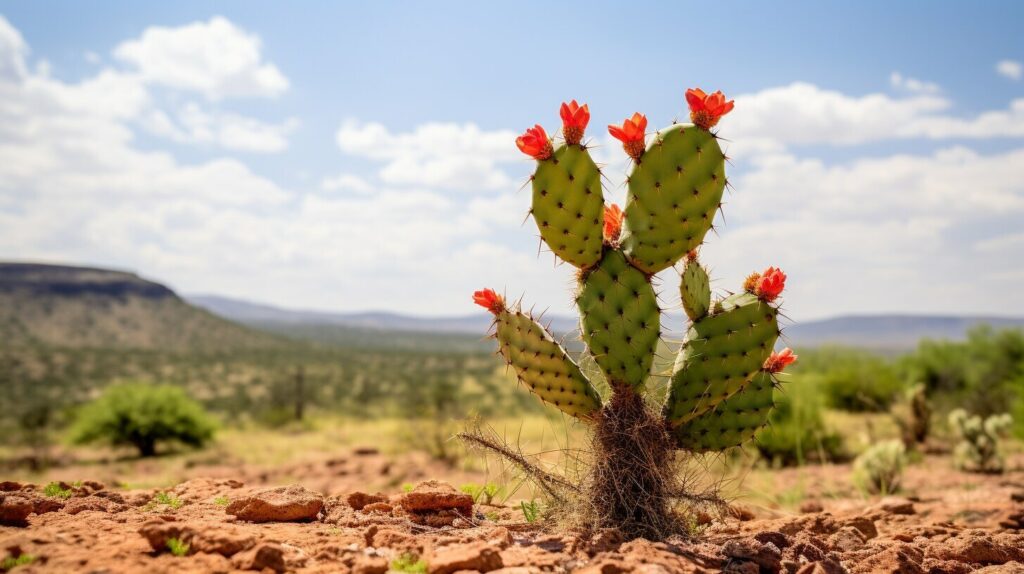
Identifying and Locating Prickly Pear Cactus
Prickly pear cactus can be found in a variety of habitats, from deserts to coastal areas. Look for it in sandy or rocky soil, where the plant can get plenty of sunlight. You may also find it growing in disturbed areas such as construction sites, roadsides, and abandoned lots.
Identifying prickly pear cactus is relatively easy. Look for flat, paddle-shaped pads that are green, blue-green, or purple in color. The pads are covered in sharp spines, so use caution when touching them. The prickly pear cactus produces bright, showy flowers in shades of yellow, pink, orange, and red. The fruits of the prickly pear cactus are edible, and they range in color from green to yellow to red.
How to Find Prickly Pear Cactus
If you’re having trouble locating prickly pear cactus, try walking slowly through areas where you suspect it might grow. Look for the distinctive pads and flowers, and pay attention to the soil type and amount of sunlight. You may also want to consult a field guide or talk to local experts to get a better idea of where to find prickly pear cactus in your area.
Prickly Pear Cactus Foraging Season
Prickly pear cactus typically blooms in the spring and early summer, with fruits ripening from late summer through early fall. However, the exact timing of the blooming and fruiting season can vary depending on the climate and location. To ensure a successful foraging experience, it’s important to time your foraging trip with the peak of the season in your area. Check with local experts or do some research to find out the best time to forage prickly pear cactus near you.
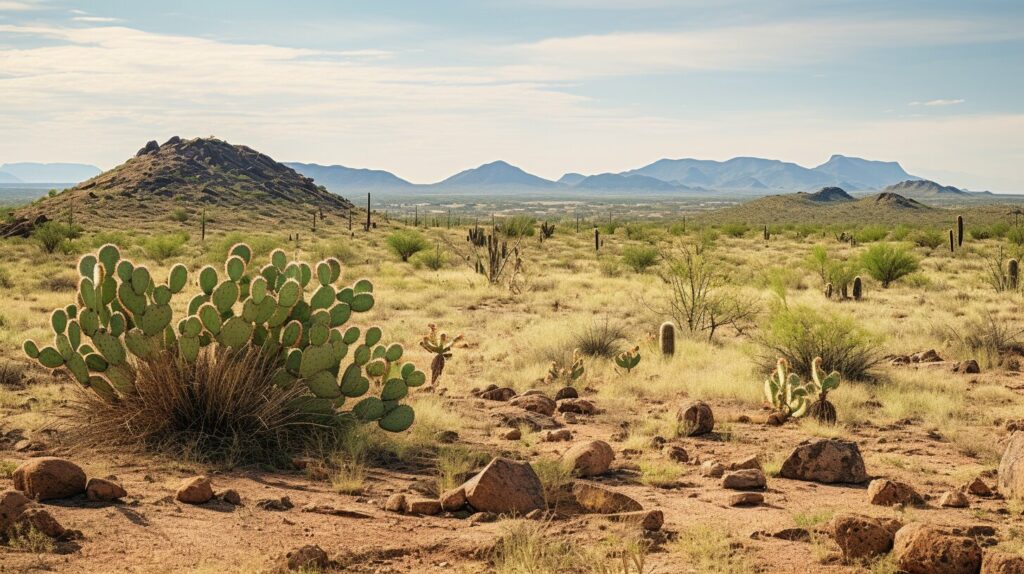
Safety Precautions for Foraging Prickly Pear Cactus
Foraging prickly pear cactus can be a fun and rewarding experience, but it’s essential to take precautions to ensure your safety and the sustainability of the plant. Here are some tips for responsible and sustainable foraging:
- Wear protective clothing: When foraging prickly pear cactus, wear thick gloves, long pants, and sturdy shoes to protect your skin from the cactus’s spines.
- Use proper tools: Make sure to bring pruners or tongs to cut or pick the cactus pads and fruits, rather than using your hands.
- Respect the plant: Only harvest what you need and leave some behind for the wildlife and other foragers.
- Know the laws: Research and comply with the local laws and regulations regarding the foraging of prickly pear cactus.
- Identify the plant correctly: Make sure to properly identify the prickly pear cactus and confirm its edibility before harvesting.
Sustainable foraging of prickly pear cactus also involves being aware of the ecosystem and not disrupting the natural balance. Overharvesting or removing too many cacti can impact the local wildlife and lead to a decline in biodiversity.
In summary, following these tips will not only ensure a safe and sustainable foraging experience but also help preserve this important plant for future generations.
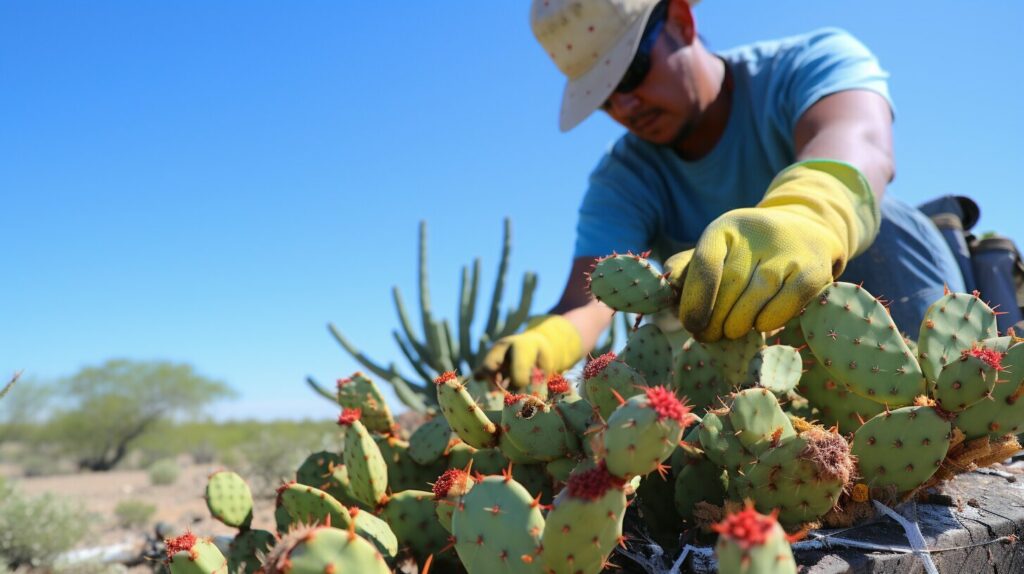
Harvesting Prickly Pear Cactus
Now that you have successfully identified prickly pear cactus, it is time to harvest them. Picking cactus pads and fruits can be hazardous, as their spines can cause injury. Follow these steps to ensure a safe and successful harvest:
- Wear thick gloves and use tongs or a specialized cactus pruner to avoid prickly contact.
- Select pads and fruits that are firm and plump. Avoid those that are visibly damaged or discolored.
- Use the pruner to cut the pad approximately 1 inch above the base. Be sure to cut the pad horizontally, ensuring that it’s level.
- Place the cut pad in a basket or container lined with a cloth or paper towel to prevent it from being punctured or bruised by the spines from other pads.
- Cut the fruit from the cactus, being careful not to touch the spines or glochids.
- Place the fruits in the basket or container, ensuring that they are not overcrowded.
- Transport the harvested cactus pads and fruits in a covered container to prevent any spillage or damage.
Once you have harvested the prickly pear cactus, it’s time to prepare and cook it.
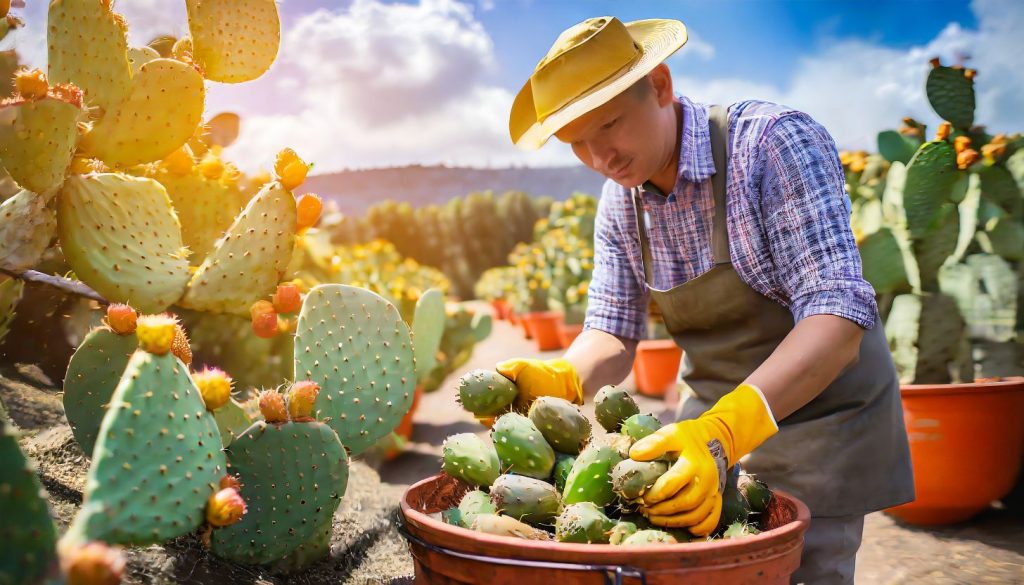
Preparing and Cooking Prickly Pear Cactus
Prickly pear cactus is an incredibly versatile plant and can be used in various culinary applications. However, before preparing it, you must first remove the thorns and outer layer to avoid any unpleasant surprises when consuming it.
To clean the cactus pads, remove the spines using a vegetable peeler or sharp knife. Hold the pad with tongs or gloves to avoid getting pricked by the remaining fine thorns on the surface.
Next, remove the outer layer by making a cut at the edge of the pad and peeling it away. The flesh underneath can now be sliced, diced, or cubed, ready for use in salads, stews, or stir-fries.
For a simple and delicious preparation, toss the sliced cactus pads with olive oil, salt, and pepper, and grill them until tender and slightly browned. You can also bake or sauté them with your favorite seasonings.
The prickly pear fruit is another edible part of the cactus that is rich in antioxidants, vitamins, and fiber. Similar to the pads, the fruit must be peeled and deseeded before eating. It can be added to smoothies, jams, or used to make a refreshing drink called agua fresca.
If you’re feeling adventurous, you can even try making prickly pear cactus candy by boiling the peeled fruit in sugar syrup until it thickens and crystallizes.
Overall, prickly pear cactus is a versatile and nutritious ingredient that can add a unique flavor and texture to your dishes. By following these simple steps, you can enjoy the benefits of this remarkable plant in your own kitchen.
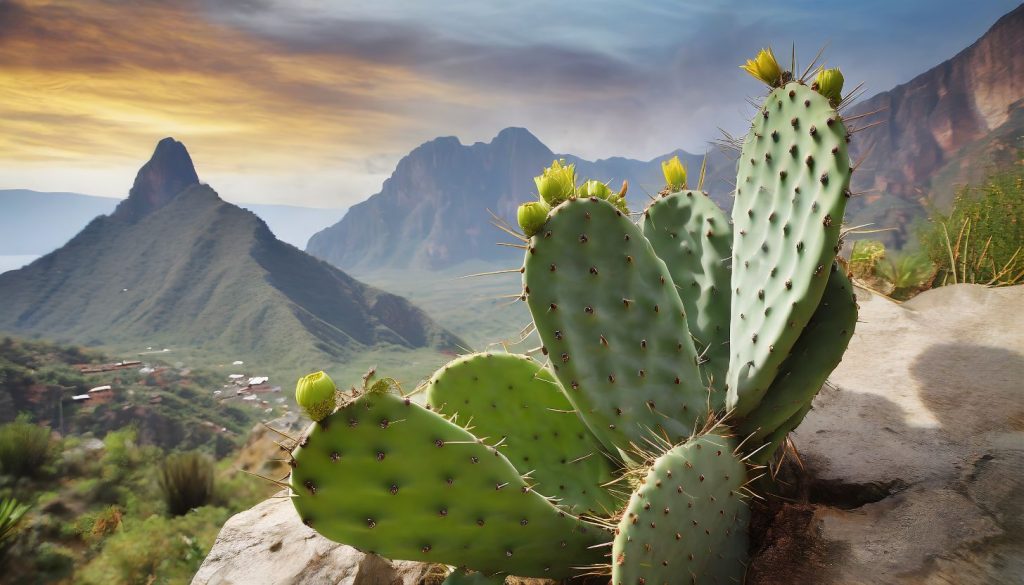
Utilizing the Benefits of Prickly Pear Cactus
The prickly pear cactus is more than just a tasty treat. It is also a source of numerous health benefits that you can take advantage of.
One of the main benefits of prickly pear cactus is its high content of antioxidants. These compounds help protect your body from free radicals that can cause cell damage.
Prickly pear cactus is also low in calories and high in fiber, making it an excellent food choice for those watching their weight or looking to improve their digestion. Additionally, it contains essential vitamins and minerals such as vitamin C, magnesium, and potassium.
Studies have also suggested that prickly pear cactus may have anti-inflammatory properties and can potentially benefit those with certain medical conditions, such as diabetes and high cholesterol.
With all of these benefits, it’s no wonder that more people are turning to prickly pear cactus as a natural dietary supplement.
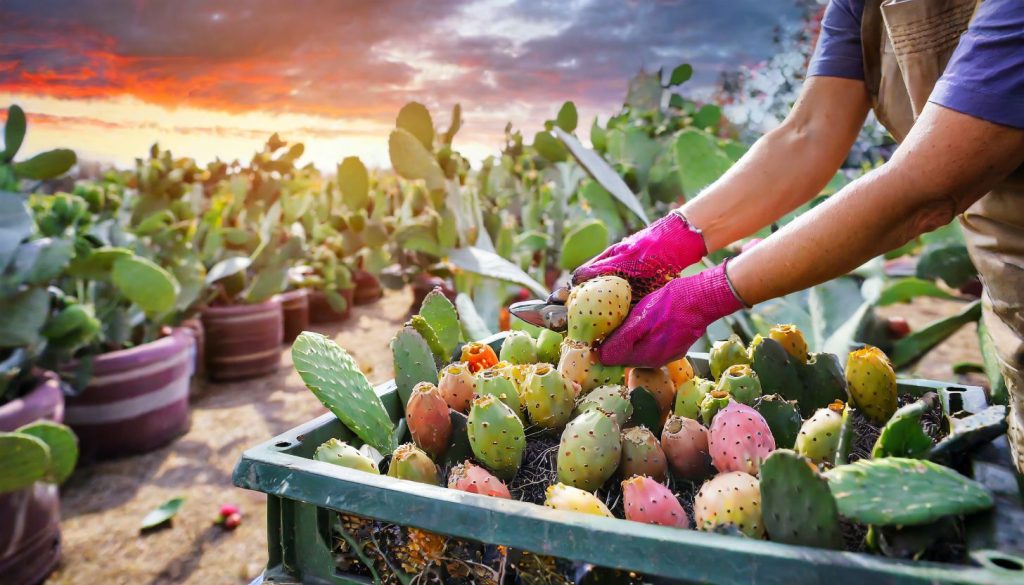
Whether you’re using it in smoothies, salads, or as a standalone snack, the prickly pear cactus is a versatile and nutritious addition to your diet.
Exploring Further Foraging Opportunities
Now that you have familiarized yourself with foraging prickly pear cactus, you may be interested in discovering other wild edible plants. There are numerous wild plants that are safe to eat and offer unique flavors and textures.
One example is wild mustard, which has a delicate, peppery taste and can be used in salads or stir-fries. Dandelion greens are also a popular choice and can be eaten raw or cooked. They are high in vitamins A and C and offer a slightly bitter taste. Purslane is another edible plant, with a tangy, lemony flavor and high levels of omega-3 fatty acids.
When foraging for wild plants, it is crucial to do your research and ensure that you can correctly identify them. You should also avoid foraging near roadsides, where plants may be exposed to pollution.
Remember, foraging responsibly means leaving enough for the plant population to continue to thrive and grow. Only harvest what you need and never take more than one-third of a plant. Harvesting selectively will also encourage new growth and ensure that the plant population remains healthy.
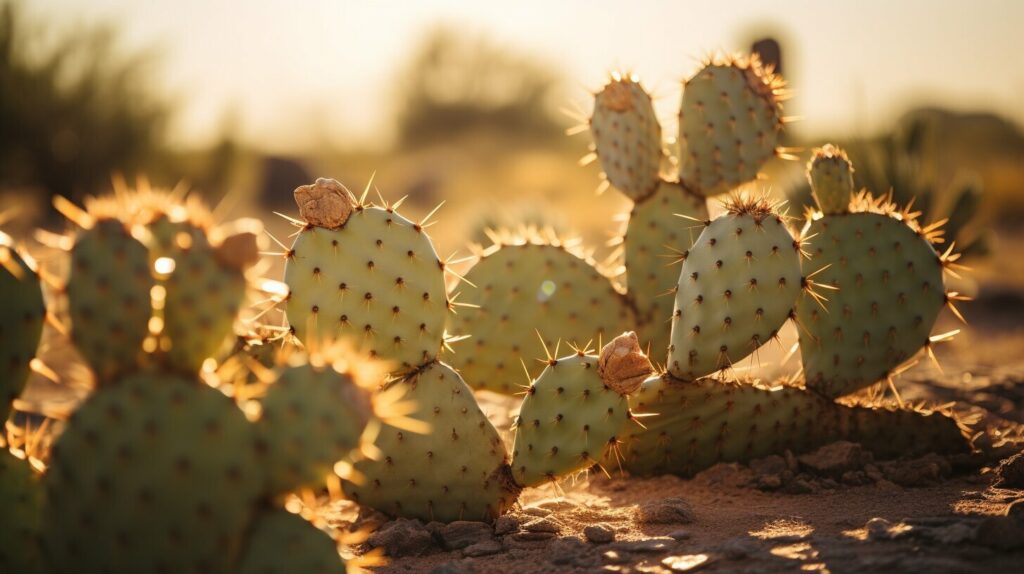
Exploring further foraging opportunities can be an enriching way to connect with nature and discover new flavors and health benefits. Be sure to forage sustainably and responsibly, respecting the natural environment and the plants that call it home.
Conclusion
Foraging for wild plants, such as the prickly pear cactus, connects us to a rich history of human interaction with the natural world. It offers an opportunity to gain a deeper understanding of our environment while providing unique flavors and health benefits. However, responsible foraging is essential to ensure the sustainability of these plants and the preservation of our ecosystems.
This comprehensive guide has covered the identification, safety precautions, harvesting, preparation, and utilization of prickly pear cactus. By following these guidelines, you can safely and responsibly embark on your own foraging adventures and enjoy the delicious and nutritious offerings of nature.
Remember that foraging is a journey of discovery, and there are many other wild edible plants waiting to be explored. Continue to learn and appreciate the diverse bounty that nature provides, all while respecting and preserving the natural world. Happy foraging!
FAQ
Can I eat prickly pear cactus?
Yes, prickly pear cactus is edible. Both the pads (nopales) and the fruits (tunas) can be consumed.
How do I identify prickly pear cactus?
Prickly pear cactus has flat, paddle-shaped pads covered in spines and vibrant colored fruits. It is important to be cautious of the spines when identifying.
When is the best time to forage prickly pear cactus?
Prickly pear cactus can be foraged throughout the year, but the best time is during the late summer to early fall when the fruits are ripe and the pads are young and tender.
Are there any safety precautions I need to take while foraging prickly pear cactus?
Yes, it is important to wear gloves and use long-handled tongs or a knife to avoid the spines. Make sure to also leave enough cactus behind to ensure sustainable foraging.
How do I harvest prickly pear cactus?
To harvest the pads, use tongs or a knife to cut them off. For the fruits, simply twist and pull them off the plant. Remember to handle them with care due to the spines.
How can I prepare and cook prickly pear cactus?
Prickly pear cactus can be grilled, sautéed, or boiled. Remove the spines and chop the pads into desired pieces before cooking. The fruits can be peeled and eaten raw or used in various recipes.
What are the nutritional benefits of prickly pear cactus?
Prickly pear cactus is low in calories and a good source of fiber, antioxidants, vitamins, and minerals. It may help with digestion, blood sugar control, and heart health.
Can I forage other wild edible plants besides prickly pear cactus?
Absolutely! There are many other wild edible plants to explore. Some examples include dandelion greens, wild mushrooms, and wild berries. Make sure to research and identify them properly before foraging.

